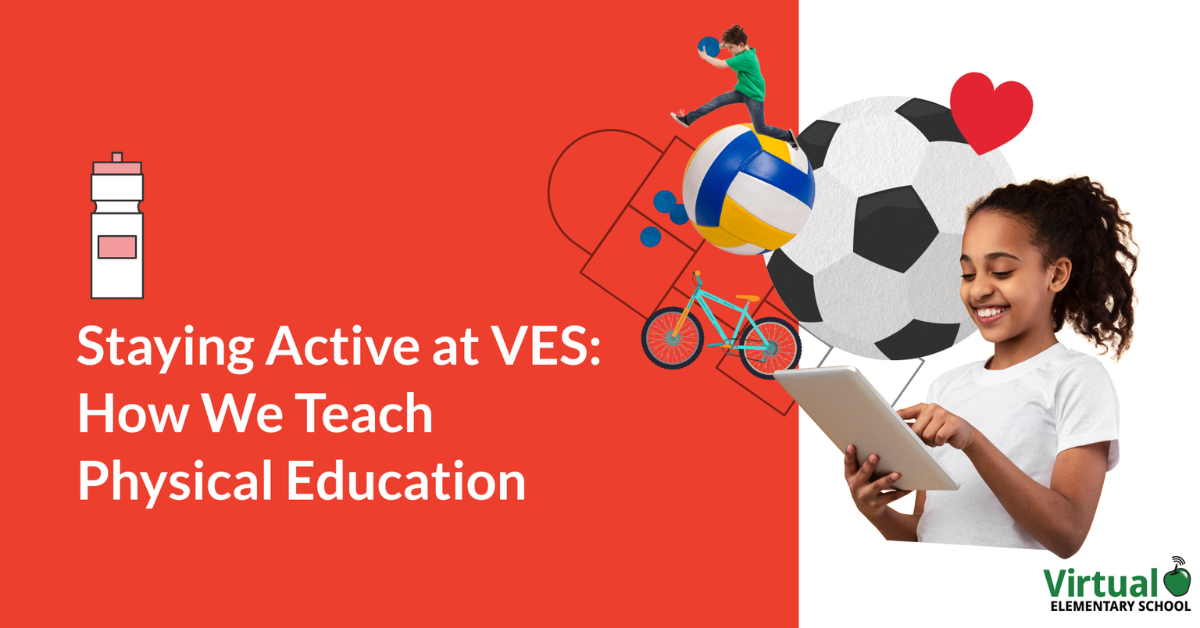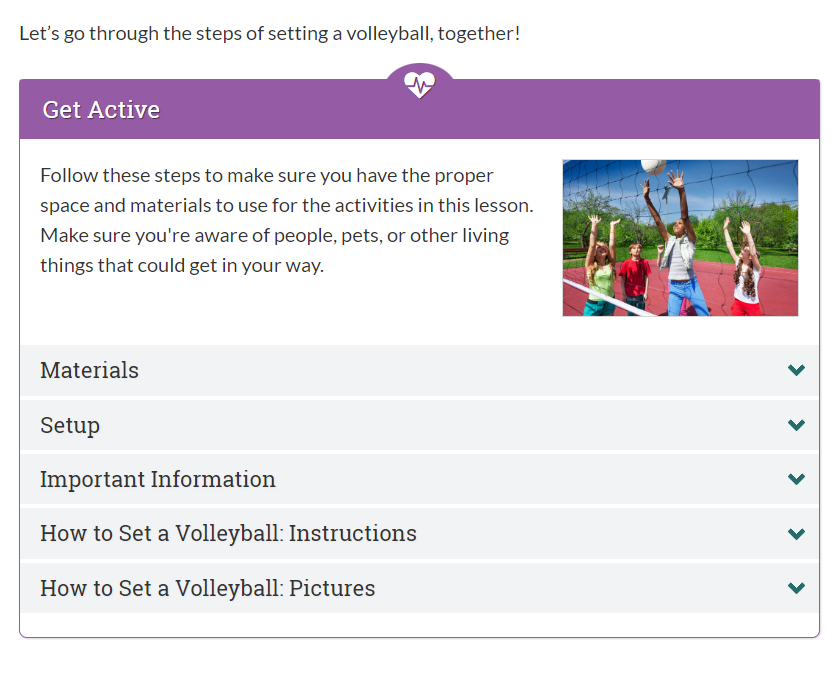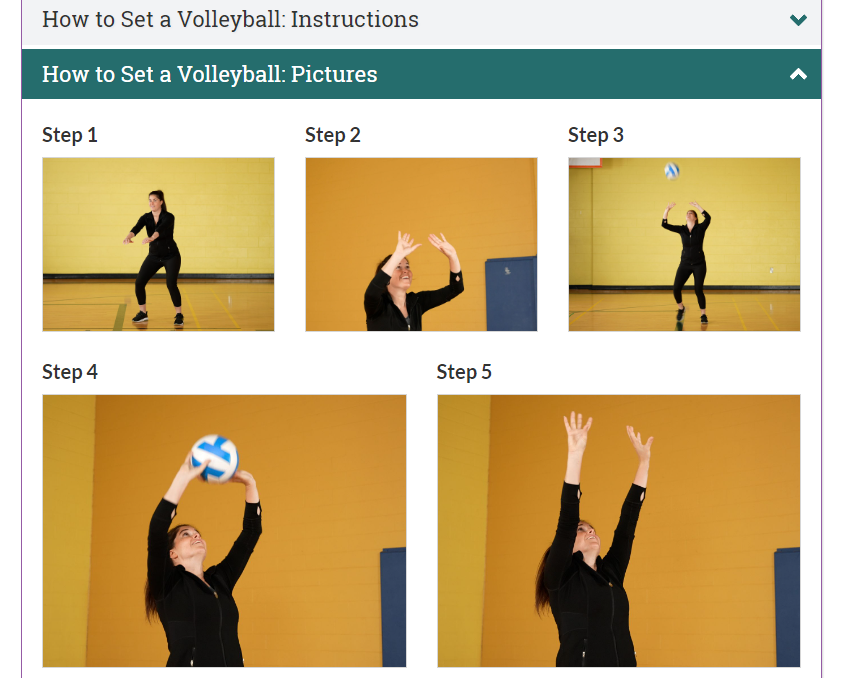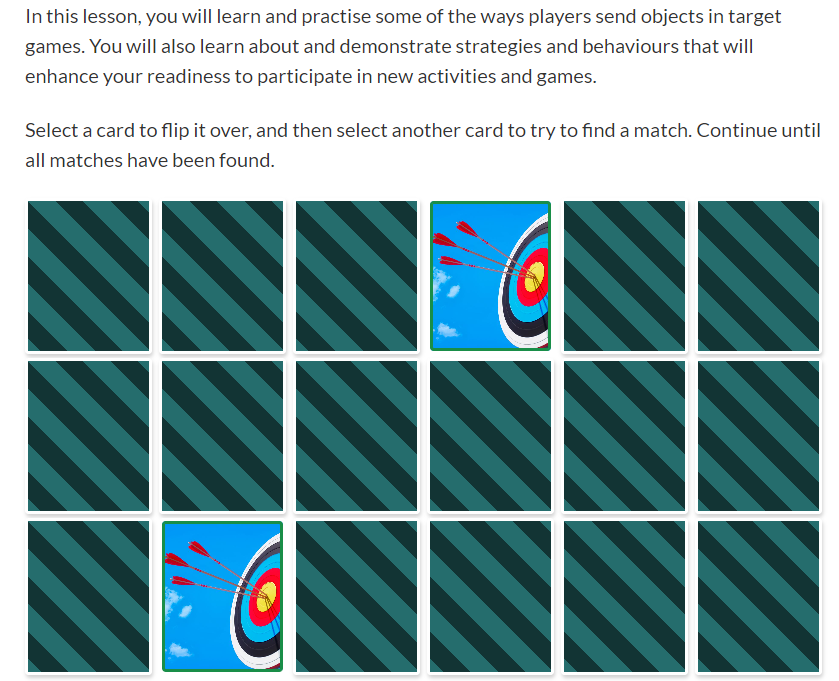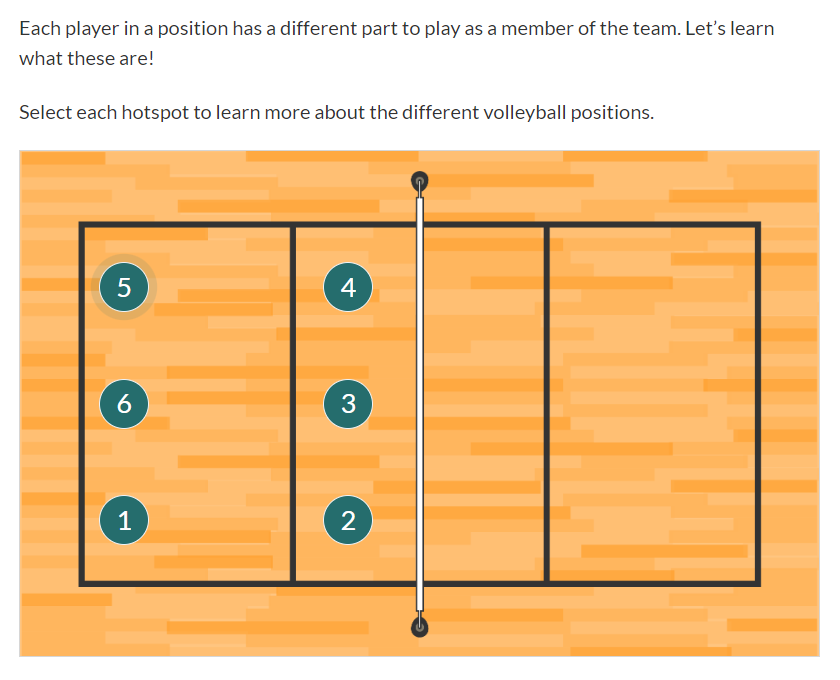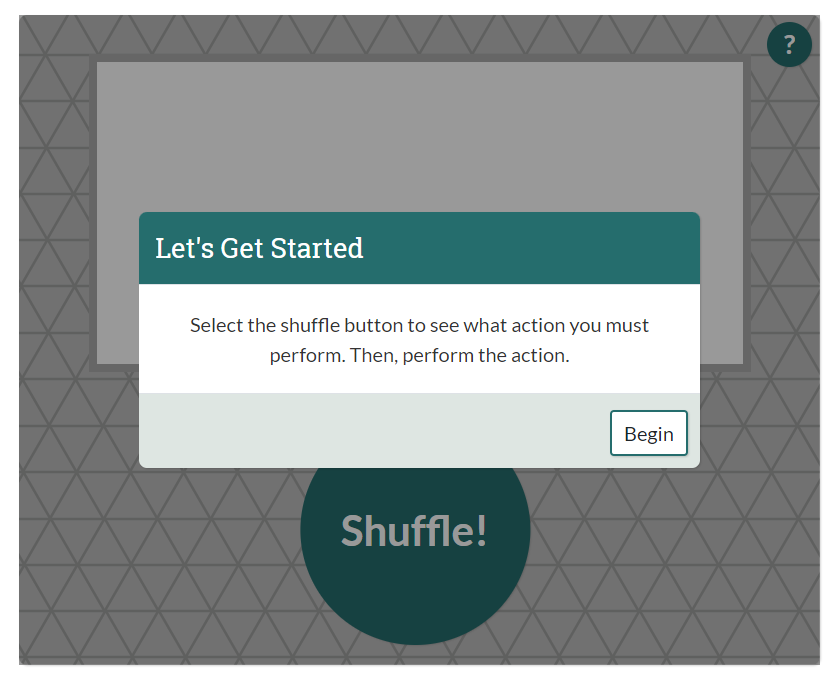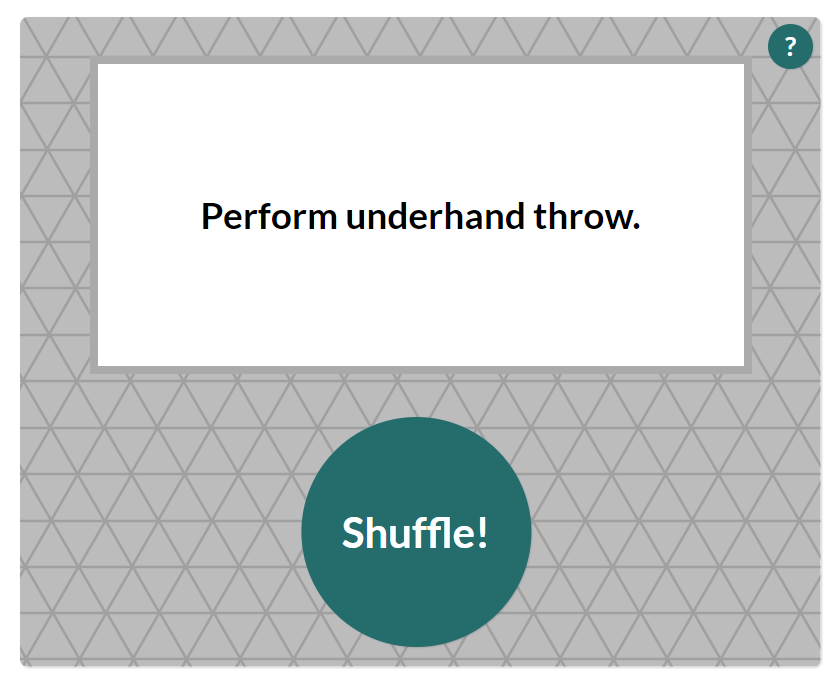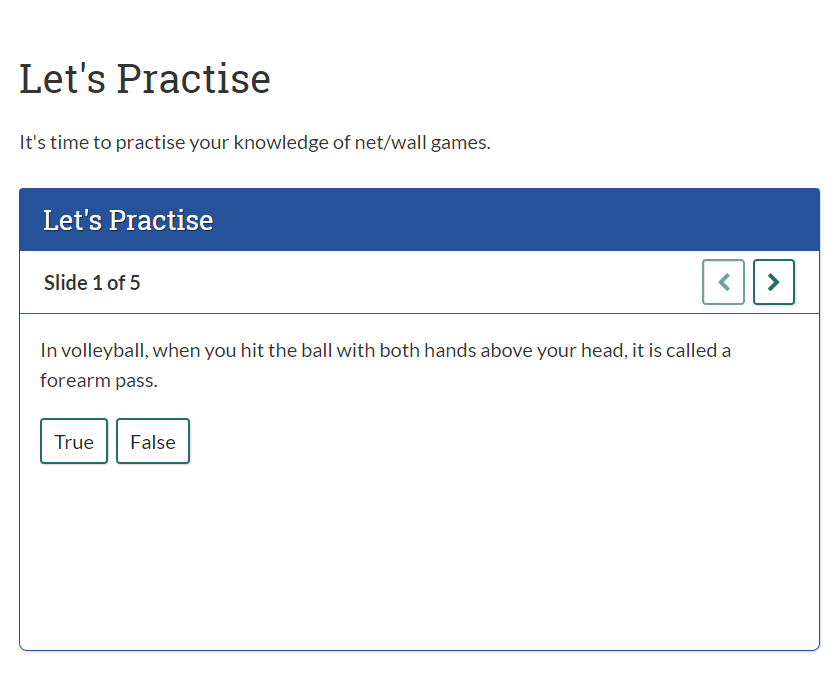“How do you teach health and physical education online?!” This is a question that the Virtual Elementary School team gets asked all the time. When planning our courses, we start by asking ourselves similar questions like, “How can we design online courses that are meaningful to students?” and “What technologies do we have to enhance the student experience outside of a traditional classroom?” Some subjects, like social studies and math, lend themselves well to the online format. But how do we design physical education courses and other more hands-on subjects online? Here are some of the ideas we’ve come up with over the years!
In the physical classroom, a hands-on teaching strategy might look something like this:
- Introduce a new skill like setting a volleyball.
- Watch and note that each student is using the pads of their fingers instead of the tips.
- Write down progress accordingly.
In an online setting, monitoring students directly and in real time is not an option, so our team needs to get creative. Let’s take a closer look at some of the tools we use to teach students how to set a volleyball as an example of our innovative approach to teaching physical education online.
Modelling with Video
One of our greatest assets at VES is our media team. They create in-house images and videos to help teach difficult concepts. For the setting of a volleyball video, we were very careful to include close-ups of the actor’s hands, as well as wide shots, to show the overall motion that students are required to practice. Other features, such as slow motion, are also utilized to make sure students can clearly see the steps to set a volleyball. Videos like this are filmed and edited by our media team in a studio or on location, so they require planning, written scripts, and actors.
Unplugging and Getting Active
Our “Unplug” activities and “Get Active” boxes provide students with a chance to step away from their screens and move their bodies. These give students step-by-step instructions with images on how to perform a specific skill or strategy.
Interactives
We know that it’s important for students to learn in a variety of different ways. We try to make our courses as interactive as possible when planning and developing. A great way to break from straight instruction is to include interactive elements in the course. These help scaffold student learning and are also just plain fun! We’ve packed our health and physical education courses with games, clickable images, matching elements, sorting activities, and many more interactive learning experiences.
Assessments
We understand that students have different strengths when it comes to demonstrating their knowledge, so we have to ensure that our assessments come in a variety of different formats too! Most of these are meant to assess student understanding before they complete graded assessments. These assessments for learning (AfLs) are not graded, but rather designed to teach students the required skills for the lesson and give instructors an opportunity to provide meaningful feedback early on. Assessments for Learning may include projects, practice quizzes, interactive games, written work, and many other activities. For graded assessments, our health and physical education courses ask students to demonstrate various skills through a combination of video submissions, audio recordings, quizzes, and images.
At Virtual Elementary School, we strive to inspire a love of learning in our students, but also in the people who work so hard to create our course content. Our content developers and media team are always looking for new and fun ways to present lessons to students that remain relevant in our ever-changing world. We’re constantly upgrading, updating, and working to evolve our courses to give you and your learner the best experience possible.

